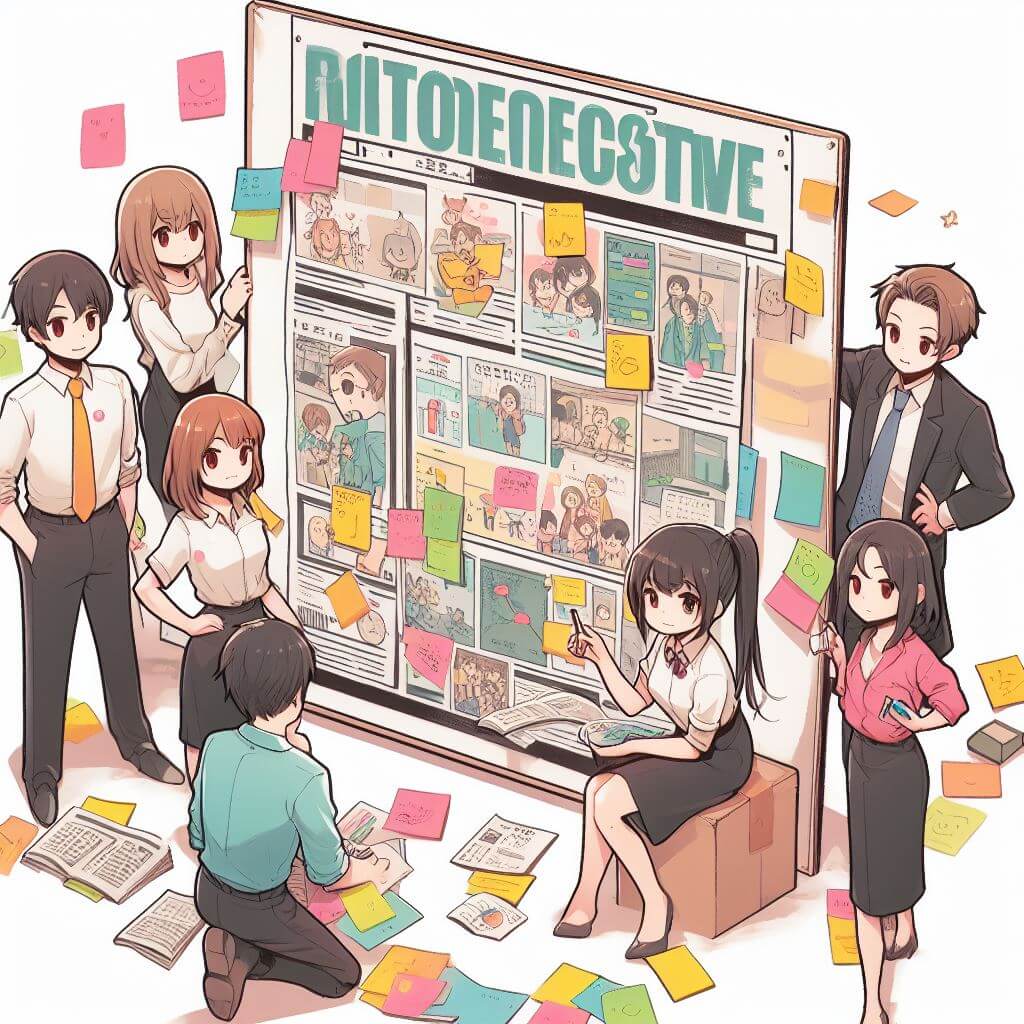SREチームのミッション・ビジョンを決めた話
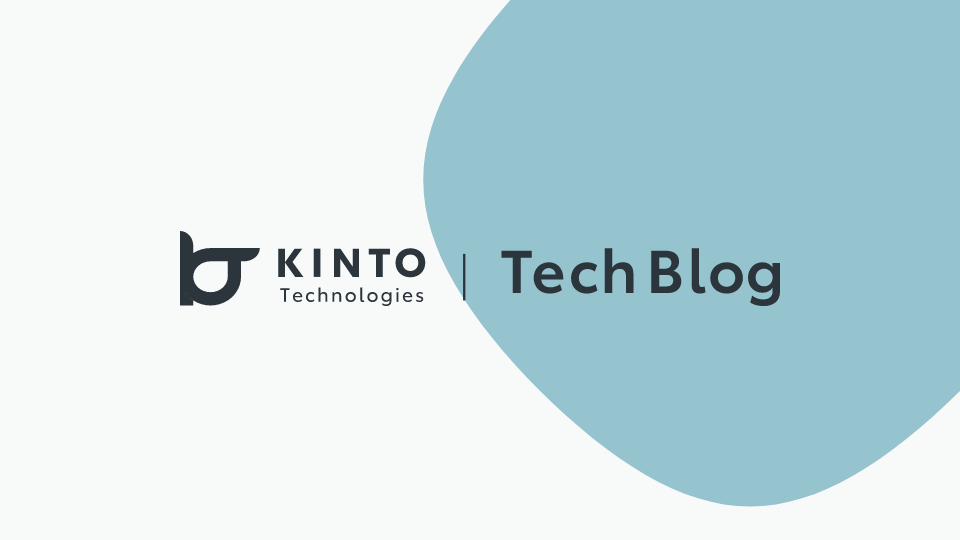
はじめに
こんにちは、KINTOテクノロジーズ(以下KTC)プラットフォームグループでSREチームのリーダーをしている長内です。この記事ではSREチームのミッションとビジョンを策定したお話を書きたいと思います。
※決まったミッションだけ見たい方はこちらへ飛んでください。
なぜミッション、ビジョンを決めたか
今回ミッションとビジョンを決めるに至った経緯として大きく3つあります。
1. チームメンバーからの提言
SREチームは2021年の1月に発足しましたが、紆余曲折を経て今年の3月末の時点では1人体制でした。そんな中、4月に入社したメンバーが「SREチームのミッション、ビジョン作りませんか?」と提案してきたところが発端になります。彼の前職では会社のミッションやビジョンが日常の業務に根付いており、うまく機能していたとのことでしたが、自分としてはこの時点ではあまり必要性を理解しておらず、時間があったらやろうねくらいの気持ちでした(ごめんね)。
2. チームとしてのロードマップを上位層に示す必要性
そんな中、SREチームは2人体制でリソースに余裕がなかったため、採用強化のための施策を打とうとしていました。
その過程で、SREチームはどういうことを実現したくて、そのためにどういった課題感があり、それを解決するためにどういった人がどれだけ必要なのかを明確に上位層に伝える必要性が出てきました。
それに伴い、SREチームのロードマップを作成することになったのですが、もう少し抽象的なレイヤーとしてSREチームの活動の指針となるミッションやビジョンがあった方が良いよね、となってきました。
3. SREという言葉の多様化
そんなことから色んな企業のSREチームのミッションやビジョンを眺めていると、こんなスライドがありました。
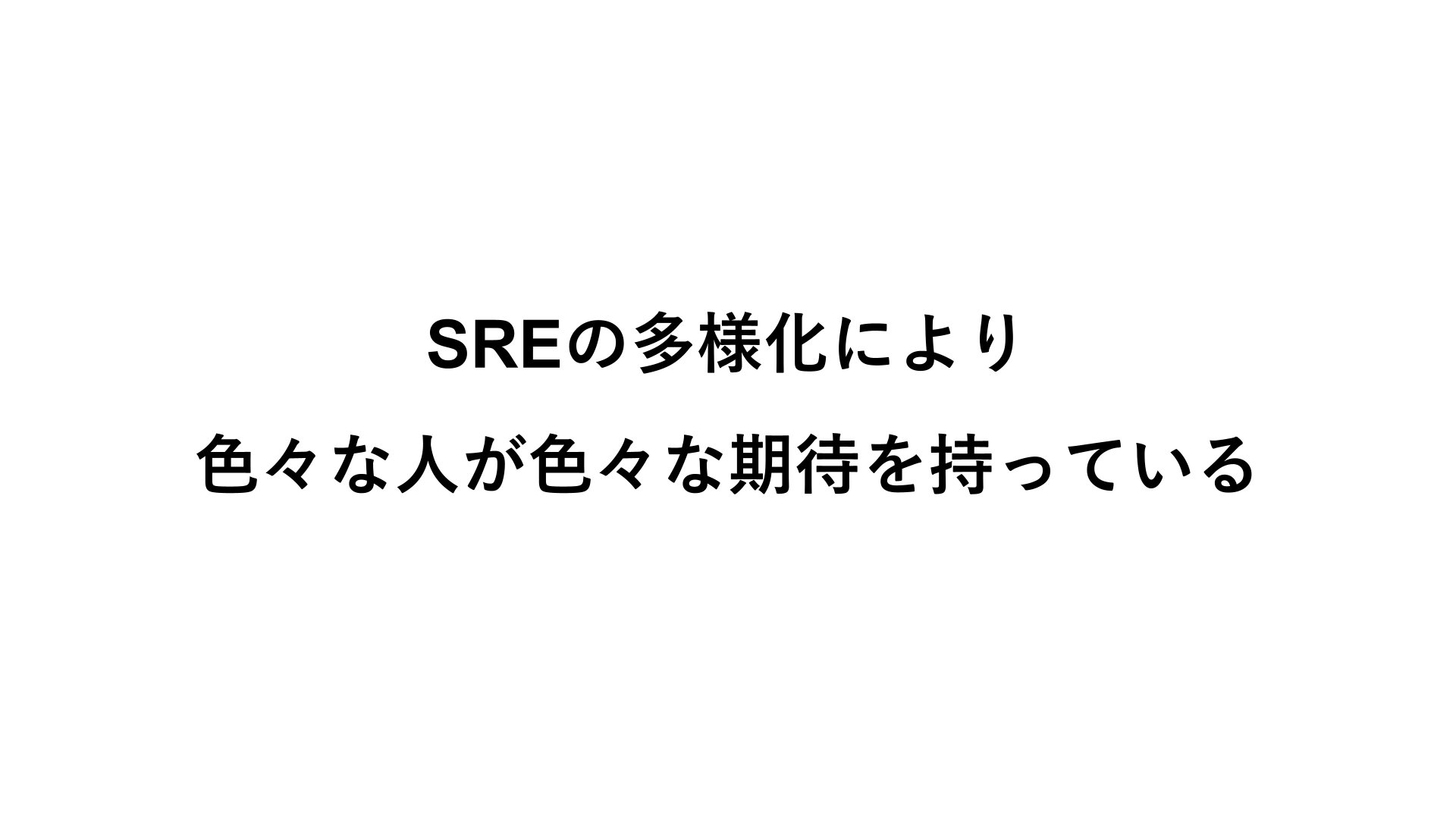
SREは何を目指すのか より
個人的にはこれが一番しっくりきました。KTCにはSREチームの他に、Platform Engineering、Cloud Infrastructure、DBRE、CCoE、Securityなどの横断部署がチームやグループとして存在しています。SREという言葉が扱う内容は非常に広いと思うので、こうした周りの環境がある前提で自分たちがやるべきことを明確化しておく必要性を感じました。
どう決めたか
ということで、ミッションとビジョンを決めよう!となりましたが、どう決めるかの指針もなく、手探りでのスタートでした。
まず、どれくらいの期間でどれくらい時間を使って決めるかという点ですが、週次MTGで徐々に決めるのはだらだら続きそうということもあり、ある程度短期間で決めようとなりました。
1日みっちり時間を取って実施することも考えましたが、アイデアがその日のコンディションに左右されるところもありそうなので、1日1時間を土日を挟んだ5営業日で実施することにしました。実際にやってみての感想ですが、複数日で実施した方が個人的には良いと感じました(入浴中や寝る前にアイデアが湧いてきたりしました)。
続いてどのように決めたかですが、Google re:Workを参考に作ることにしました。
この中のマネージャーのテーマにあるチームのビジョンを設定してメンバーに伝えるに沿って進めていきました。
今回はミッション、ビジョンの策定が目的のため、当該コンテンツのコアバリュー、パーパス、ミッションの決定までに留めました。
ビジョンに関しては「ミッションを実現した時に、SREチームひいては会社全体がどういう姿になっていてほしいか?」という観点で、決まったミッションを元に考えることにしました。
1日目 大切にしたい価値観の洗い出し
まず、初日はチームメンバー各々が大切にしたい価値観の洗い出しから始めることにしました。コラボレーションツールにはmiroを使用し、技術的でないものも含めてどういったことを大切にしたいかを各々付箋に書いていきます。大切にしたいものと言うとなかなかアイデアが出なかったりするので、逆にこういった状態になると嫌だよねという観点から見つける方法も有効だと思いました。
続いて各々が高く評価している人物の価値観をざっくばらんに話しました。
2日目 チームのコアバリューを深掘り
2日目は初日に出した価値観についてそれぞれ話しました。異なる内容でも、なぜなぜ分析のように「何でその価値観を大事にしたいのか?」といった感じで少しずつ抽象化していくと似たような価値観に行き着いたりしたので、そういったものをメモしながら進めるとミッションを決める時に役立つかもしれません。
続いて共感できる価値観についての説明や具体的な行動について考えていきます。今回は2人で実施しているので、互いの価値観から共感できるものをいくつかピックアップし、それらの価値観について深掘りしました。一例として「良いコラボレーションでより良いアウトプットを」といった価値観がありましたが、少し抽象的な表現だったので良いコラボレーション、良いアウトプットとは何だろうか?と具体的な言葉に置き換えていくとイメージが湧いてきました。
3日目 チームの存在理由を検討
3日目はパーパス(チームの存在理由)について考えました。このチームの存在理由は?と題した6つの質問に対して議論しながら回答を作っていきます。
ちょっと注意した方がいいと感じたのは、これらの質問は現状についてのものになるので、根本的な存在理由の回答にバイアスがかかる可能性がある点です(特に現状の組織に変化をもたらしたい場合)。
今までやってきたことなどを振り返り、抽象化してなぜそれをやってきたのかを改めて見つめ直すことで、根本的な存在理由になりそうなものが見えてきました。
4日目 ミッションの決定
4日目はついにミッションを決めていきます。まずは自己省察として3つの質問に各々が考えを付箋に書き出しました。
そして、1日目からの内容を踏まえてミッションを決めていきました。
正直言葉が降りてくるか勝負なところはありましたが、これまで実施した内容や会話などからキーワードとなるような言葉をピックアップし、それを満たすような表現にしました。
また、それが5つのミッションの特性を満たしているかを検討して決定しました。
5日目 ビジョンの決定
5日目は決定したミッションを実現した時に、SREチームひいては会社全体がどういう姿になっていてほしいかを想像してビジョンを決定しました。
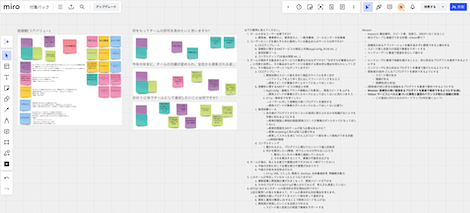
実際に作成したMiroボード(雰囲気のみ)
決まったミッション、ビジョン
実際に決まったミッションとビジョンが以下になります。
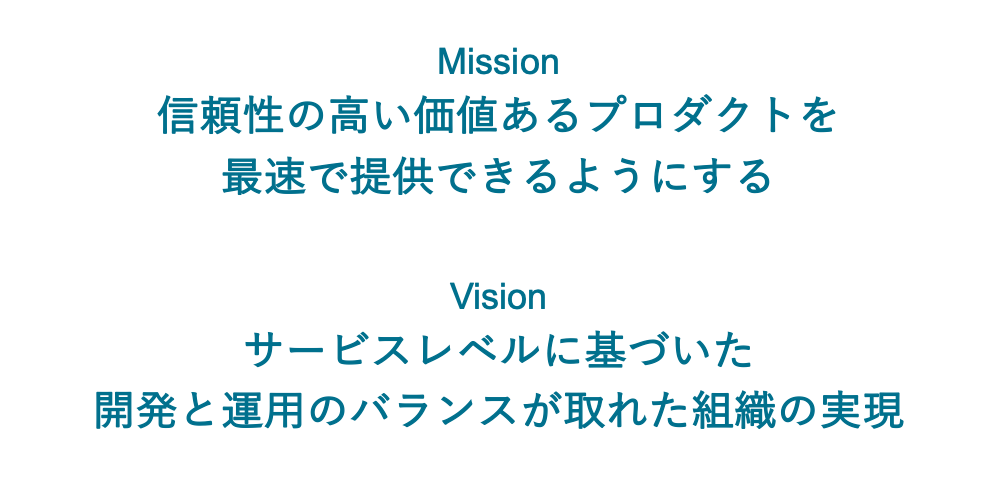
ミッションついて説明すると、まず「プロダクトを最速で提供できるようにする」という部分ですが、KTCでは様々なプロダクトが存在しています。それらができるだけ早くユーザーの元に機能を提供できるようにし、フィードバックを得られる環境を作っていきたいと考えています。
ですが、早く提供するだけでは不十分で、ユーザーにとって「価値ある」プロダクトを届ける必要があります。
また、いくら価値のあるプロダクトを早く提供できても、ユーザーが満足して使えない状態では意味がないので「信頼性の高い」という言葉を付け加えました。
ビジョンについては、信頼性の高い価値あるプロダクトを最速で提供できるようになったKTCではどのような状態になっているかを想像し、「信頼性の高い価値あるプロダクト」という品質面と「最速で提供できる」という速度感を両立させるために必要なのは、サービスレベルに基づいて開発と運用のバランスを取ることだという結論になりました。
終わりに
無事にチームのミッションとビジョンを策定できました。まだ策定して間もないですが、やろうとしていることに対してミッションと照らし合わせてこれは本当にやるべきなのか、やる場合にどこまでをやるべきかといった会話が生まれるようになり、チームの指針としてうまく機能してくれそうな予感がしています。
ですが、策定したからといって終わりではありません。ミッション、ビジョン実現のためのロードマップを作成し、チーム一丸となって取り組んでいきたいと思っています。
また、SREチームでは一緒に働く仲間を募集しています。少しでも興味を持った方はぜひお気軽にご連絡ください。お待ちしております!
関連記事 | Related Posts
We are hiring!
【SRE】DBRE G/東京・大阪・名古屋・福岡
DBREグループについてKINTO テクノロジーズにおける DBRE は横断組織です。自分たちのアウトプットがビジネスに反映されることによって価値提供されます。
【DBRE】DBRE G/東京・名古屋・大阪・福岡
DBREグループについてKINTO テクノロジーズにおける DBRE は横断組織です。自分たちのアウトプットがビジネスに反映されることによって価値提供されます。

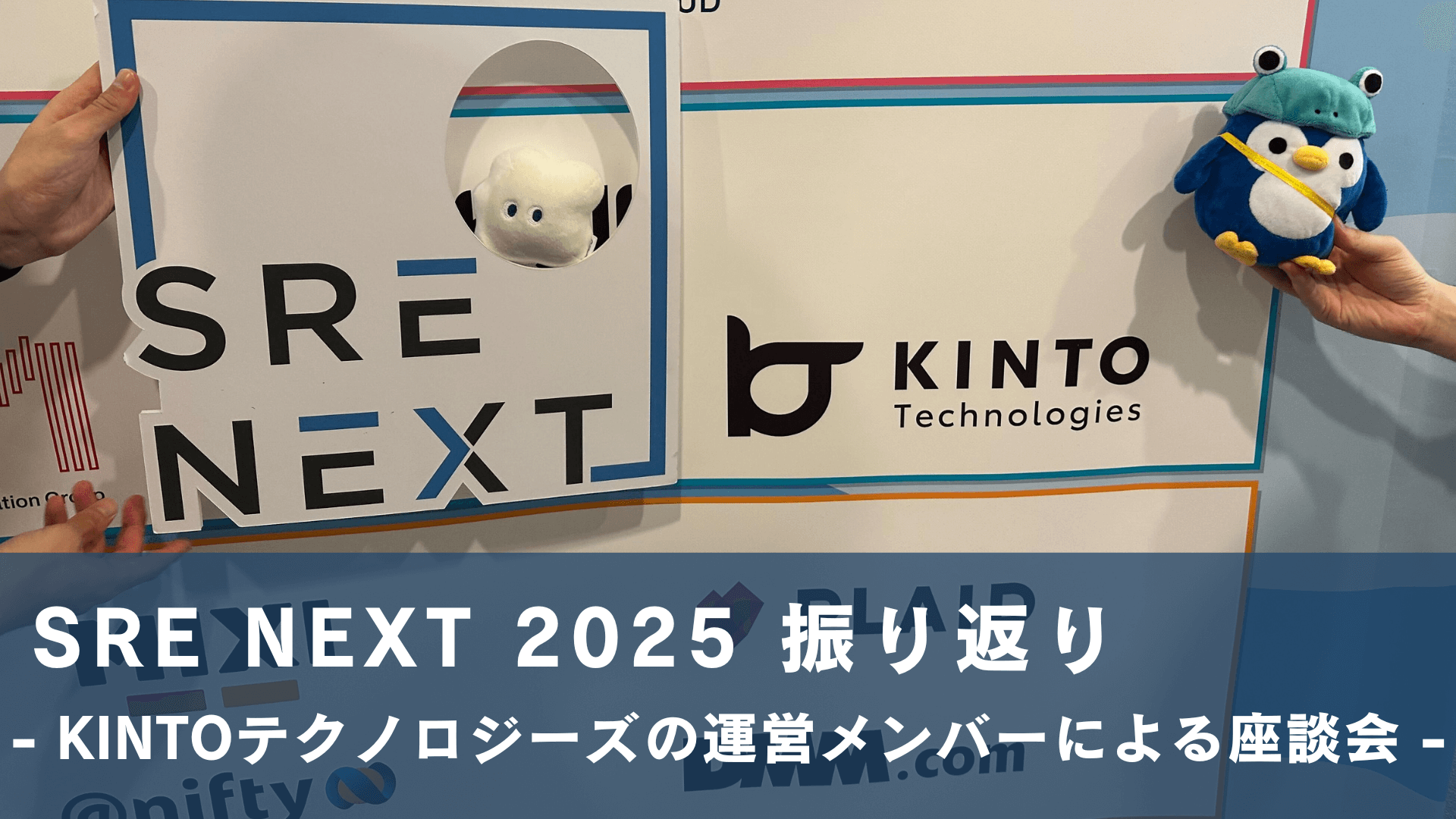
![Cover Image for [SRE NEXT] What's Your "NEXT"? 312 Survey Results!](/assets/blog/authors/kasai/20250731/cover_image.png)


